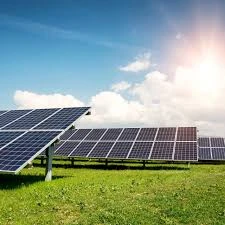solar inverter function
The Functionality of Solar Inverters A Key Component in Solar Energy Systems
As the world increasingly turns its attention to renewable energy sources, solar energy has emerged as one of the most viable options for both residential and industrial applications. Central to the effectiveness of solar energy systems is the solar inverter, a critical component that plays a pivotal role in converting solar energy into usable electricity. Understanding the function of solar inverters is essential for anyone looking to harness the power of the sun effectively.
What is a Solar Inverter?
At its core, a solar inverter is an electronic device that converts direct current (DC) electricity generated by solar panels into alternating current (AC) electricity, which is the form of electricity used in homes and businesses. Solar panels produce DC electricity when sunlight hits their photovoltaic cells, but most household appliances run on AC electricity. Thus, inverters serve the essential function of making solar energy usable in everyday applications.
Types of Solar Inverters
There are several types of solar inverters, each serving specific applications and requirements
1. String Inverters Common in residential systems, string inverters connect multiple solar panels in series, or “strings.” They are cost-effective and simple to install, but their performance can be compromised if one panel experiences shading or other issues.
2. Microinverters These are attached to individual solar panels, allowing each panel to operate independently. Microinverters can optimize the performance of solar panels in diverse conditions, making them suitable for installations where shading is a concern.
3. Power Optimizers Similar to microinverters, power optimizers are attached to individual panels and work with a centralized inverter. They optimize the output of each panel while maintaining the benefits of string inverters.
solar inverter function

4. Hybrid Inverters These inverters can work with both solar panels and battery storage systems, allowing homeowners to store excess energy for use during the night or during power outages.
Key Functions of Solar Inverters
The primary function of solar inverters goes beyond mere DC to AC conversion; they serve several crucial roles
1. Maximum Power Point Tracking (MPPT) This technology allows inverters to constantly monitor and adjust the output of solar panels to ensure they operate at their optimum power point, maximizing energy production throughout the day.
2. Grid Connection Inverters manage the flow of electricity between the solar system and the grid, ensuring that excess power generated can be fed back into the grid, often resulting in compensation through net metering systems.
3. Safety Features Solar inverters are equipped with safety features that disconnect the solar system from the grid during power outages, protecting both the system and utility workers.
4. Monitoring and Communication Many modern inverters come with monitoring systems that allow users to track energy production and usage in real-time, providing valuable data for optimizing energy consumption and system maintenance.
Conclusion
Solar inverters are indispensable for the functionality and efficiency of solar energy systems. Their ability to convert DC electricity to AC, optimize energy production, and manage connections to the grid makes them a cornerstone of solar power technology. As advancements in inverter technology continue to improve performance and reliability, the future of solar energy looks brighter than ever. Embracing solar power is not just about installing panels; understanding the comprehensive role of solar inverters is equally vital to maximizing this sustainable energy source.
-
Unlocking Energy Freedom with the Off Grid Solar InverterNewsJun.06,2025
-
Unlock More Solar Power with a High-Efficiency Bifacial Solar PanelNewsJun.06,2025
-
Power Your Future with High-Efficiency Monocrystalline Solar PanelsNewsJun.06,2025
-
Next-Gen Solar Power Starts with Micro Solar InvertersNewsJun.06,2025
-
Harnessing Peak Efficiency with the On Grid Solar InverterNewsJun.06,2025
-
Discover Unmatched Efficiency with the Latest String Solar InverterNewsJun.06,2025







